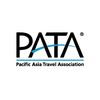Asia Pacific destinations facing five percent drop in international arrivals for 2009
Figures released today by the Pacific Asia Travel Association (PATA) show that the numbers of international visitors to the Asia Pacific region* grew by 0.7 percent year-on-year in September 2009. Growth in arrivals for the region is still down by five percent year-on-year for the first nine months of 2009.Two sub-regions recorded positive growth for the month. International visitor arrivals to Southeast Asia grew by 14 percent while arrivals to the Pacific were up nine percent. The strong 25 percent growth in arrivals to Malaysia and the rebound in arrivals to Thailand (from a low base in September 2008) boosted overall arrivals growth into Southeast Asia. Arrivals to most destinations in the Pacific also increased compared to September 2008. Australia (+9 percent), New Zealand (+9 percent) and Hawaii (+8 percent) all showed positive trends.
International visitor arrivals to Northeast Asia, the largest sub-region by number of arrivals, were down by two percent in September 2009 and, together with the Americas (-3 percent) and South Asia (-1 percent), offset the positive growth seen in Southeast Asia and the Pacific. Falling foreign inbound numbers for China (PRC) (-4 percent) and Japan (-16 percent) depressed growth in the Northeast Asia region in spite of positive results from Hong Kong SAR (+3 percent), Macau SAR (+4 percent), Chinese Taipei (+11 percent) and Korea (ROK) (+16 percent).
The one percent decline in arrivals to South Asia was largely driven by the four percent fall in international arrivals into India. Tourism demand in Sri Lanka, on the other hand, continued to improve, recording a 29 percent increase in arrivals for September 2009.
Kris Lim, Associate Director of PATA's Strategic Intelligence Centre (SIC), says, "This year is shaping up to be one of the worst for many years for international arrivals into Asia Pacific destinations. The full-year contraction in arrival numbers could be as much as five percent. This means the region could end the year with some 17 million fewer visitors this year as compared to the 377 million recorded in 2008.
"We have lost two years of growth. According to the IMF the global economy is predicted to expand by three percent next year - but faster growth is expected for the Asia Pacific region at about double the global growth rate. The prospects for 2010 appear promising but it needs to be stressed that there is no quick fix for the travel and tourism industry. All stakeholders must continue to work together to lead the industry out of the crisis," adds Kris Lim.
* 41 destinations as measured and reported in the PATA Annual Tourism Monitor
